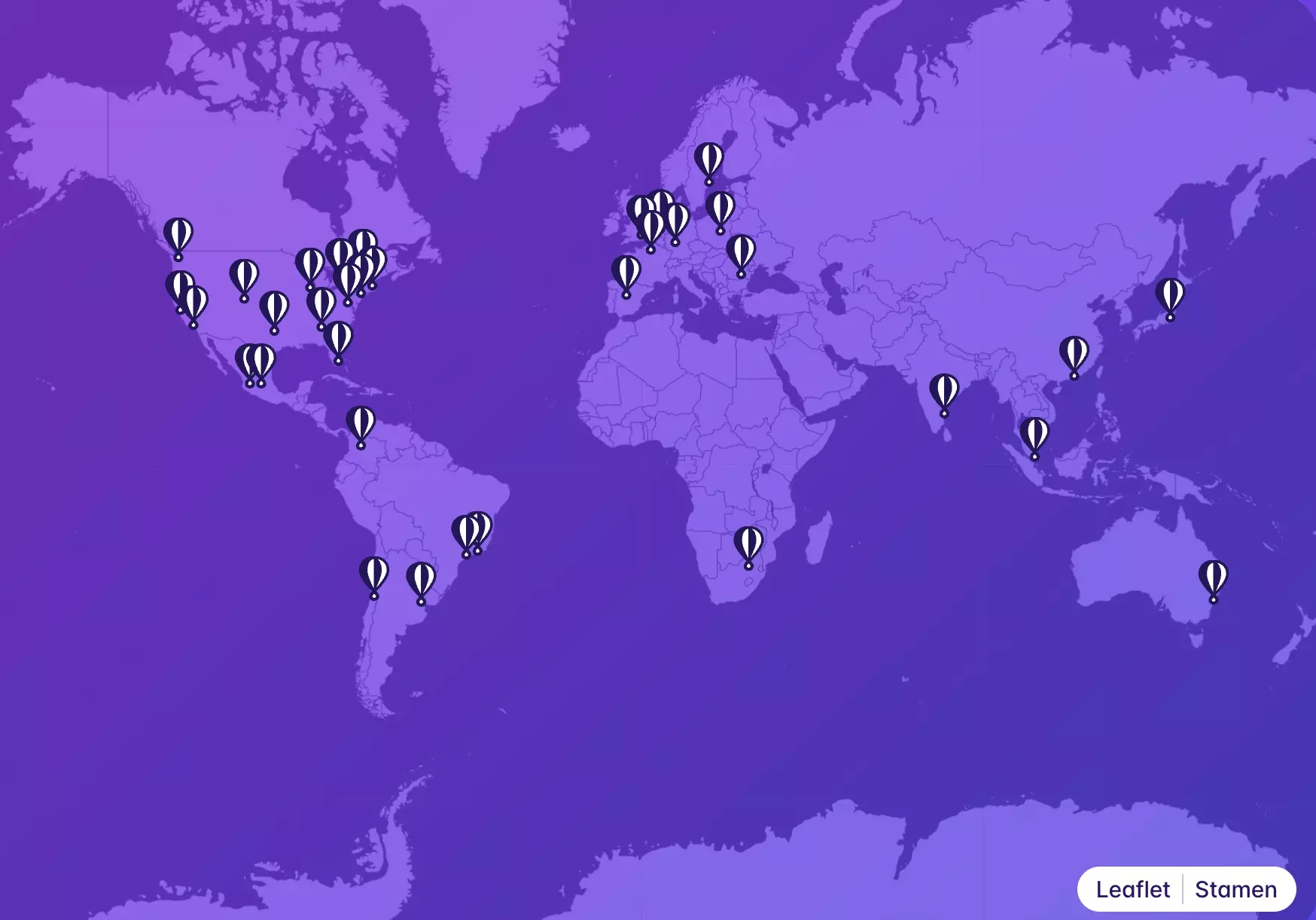Regions
Fly.io runs applications physically close to users: in datacenters around the world, on servers we run ourselves. You can currently deploy your apps in 35 regions, connected to a global Anycast network that makes sure your users hit our nearest server, whether they’re in Tokyo, São Paulo, or Amsterdam.
Run fly platform regions to get a list of regions.

Fly.io Regions
| Region ID | Region Location | Gateway* | Launch Plan or Higher Only** |
|---|---|---|---|
| ams | Amsterdam, Netherlands | ✓ | |
| arn | Stockholm, Sweden | ||
| atl | Atlanta, Georgia (US) | ||
| bog | Bogotá, Colombia | ||
| bom | Mumbai, India | ✓ | ✓ |
| bos | Boston, Massachusetts (US) | ||
| cdg | Paris, France | ✓ | |
| den | Denver, Colorado (US) | ||
| dfw | Dallas, Texas (US) | ✓ | |
| ewr | Secaucus, NJ (US) | ||
| eze | Ezeiza, Argentina | ||
| fra | Frankfurt, Germany | ✓ | ✓ |
| gdl | Guadalajara, Mexico | ||
| gig | Rio de Janeiro, Brazil | ||
| gru | Sao Paulo, Brazil | ||
| hkg | Hong Kong, Hong Kong | ✓ | |
| iad | Ashburn, Virginia (US) | ✓ | |
| jnb | Johannesburg, South Africa | ||
| lax | Los Angeles, California (US) | ✓ | |
| lhr | London, United Kingdom | ✓ | |
| mad | Madrid, Spain | ||
| mia | Miami, Florida (US) | ||
| nrt | Tokyo, Japan | ✓ | |
| ord | Chicago, Illinois (US) | ✓ | |
| otp | Bucharest, Romania | ||
| phx | Phoenix, Arizona (US) | ||
| qro | Querétaro, Mexico | ||
| scl | Santiago, Chile | ✓ | |
| sea | Seattle, Washington (US) | ✓ | |
| sin | Singapore, Singapore | ✓ | |
| sjc | San Jose, California (US) | ✓ | |
| syd | Sydney, Australia | ✓ | |
| waw | Warsaw, Poland | ||
| yul | Montreal, Canada | ||
| yyz | Toronto, Canada | ✓ |
* You can host your apps in any region; “Gateway” regions also have WireGuard gateways, through which you connect to your organization’s private network.
** For some higher-demand regions we restrict scaling up Machines to organizations with the Launch, Scale, or Enterprise plans.
Discovering your Application’s Region
You can see the list of Fly.io regions any time with fly platform regions.
You can see which regions your app is running in with fly status.
Fly Volumes and Fly Machines are tied to the region they’re created in.
When an application instance is started, the three-letter name for the region it’s running in is stored in the Machine’s FLY_REGION environment variable. This, along with other Runtime Environment information, is visible to your app running on that instance.